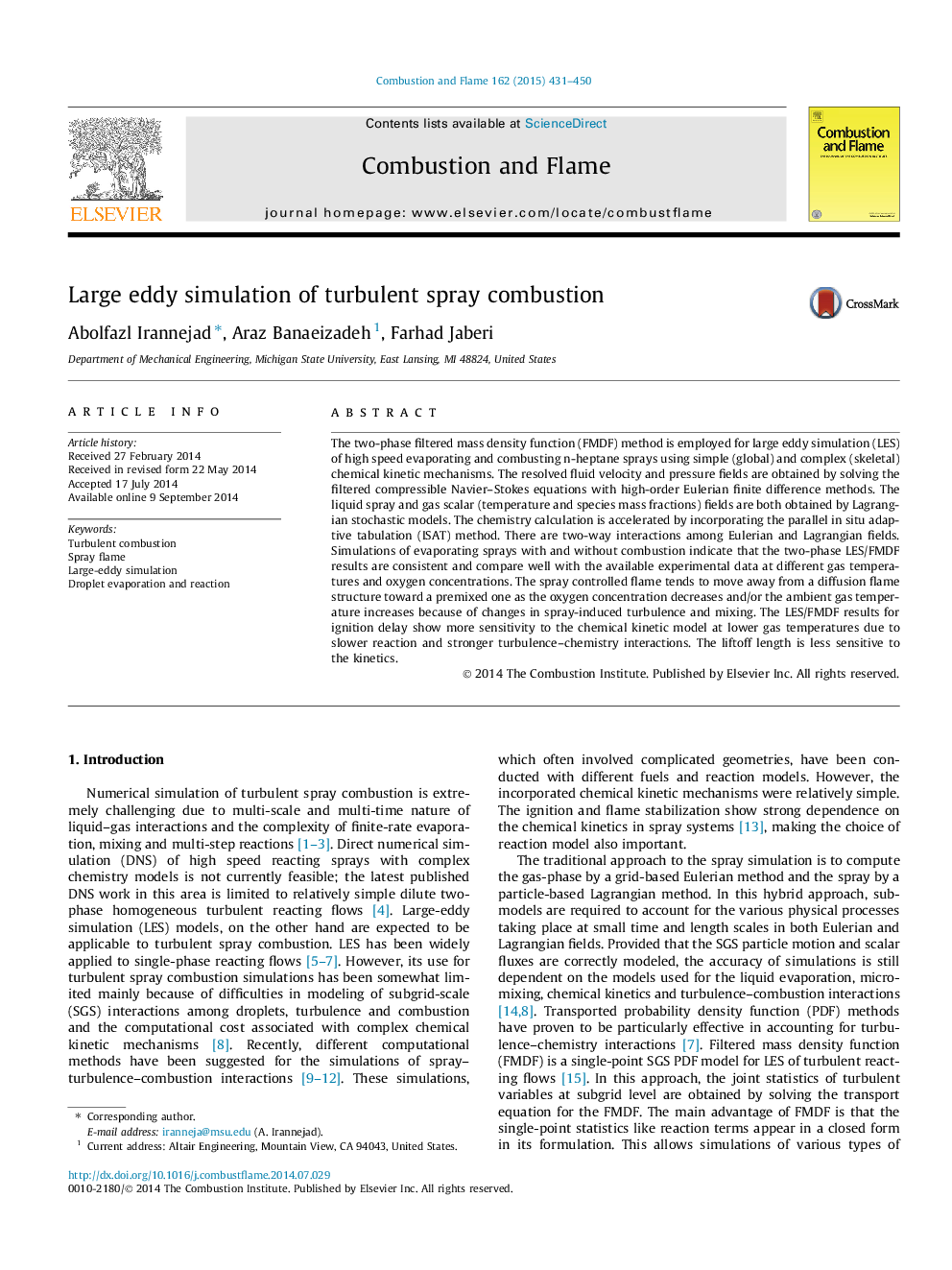| Article ID | Journal | Published Year | Pages | File Type |
|---|---|---|---|---|
| 168866 | Combustion and Flame | 2015 | 20 Pages |
The two-phase filtered mass density function (FMDF) method is employed for large eddy simulation (LES) of high speed evaporating and combusting n-heptane sprays using simple (global) and complex (skeletal) chemical kinetic mechanisms. The resolved fluid velocity and pressure fields are obtained by solving the filtered compressible Navier–Stokes equations with high-order Eulerian finite difference methods. The liquid spray and gas scalar (temperature and species mass fractions) fields are both obtained by Lagrangian stochastic models. The chemistry calculation is accelerated by incorporating the parallel in situ adaptive tabulation (ISAT) method. There are two-way interactions among Eulerian and Lagrangian fields. Simulations of evaporating sprays with and without combustion indicate that the two-phase LES/FMDF results are consistent and compare well with the available experimental data at different gas temperatures and oxygen concentrations. The spray controlled flame tends to move away from a diffusion flame structure toward a premixed one as the oxygen concentration decreases and/or the ambient gas temperature increases because of changes in spray-induced turbulence and mixing. The LES/FMDF results for ignition delay show more sensitivity to the chemical kinetic model at lower gas temperatures due to slower reaction and stronger turbulence–chemistry interactions. The liftoff length is less sensitive to the kinetics.
